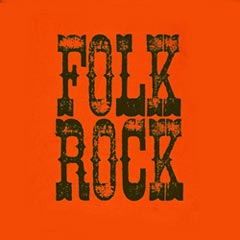Arabic Music
ON AIR - PROGRAMMING
There has been a full Arabic art Renaissance, regardless of all the problems that Arabic countries and culture have been facing. A delicate young voice that does not surrender to darkness, but blossoms in filmmaking, writing, painting, and especially music. The history of Arabic music is as long as the road that leads from India and Spain and crosses all regions and lands of the Middle East and North Africa. Thanks to this space dimension, Arabic music includes all the influences it encounters at its borders and on its path. Fast horses that carry wineskins of relaxing Moroccan music to the East where it meets the Egyptian and Kurdish flavored Persian tradition. This is Arabic music: tradition and revolution; a mix of oub, guanun, rabab, cymbals, darbouka, rig, daf, arghouls and mizmar shaken by the winds of pop, rap, rock, metal, trap and in general, by the media force of Western mainstream. A playlist with the best arabic traditional music mixed with the modern arab art. An explosion of a new music world that is growing day by day.
Exploring the Rich History and Evolution of Arabic Music
In recent years, there has been a significant growth of Arabic art and culture across the world. From filmmaking to painting, writing to music, Arab artists are leaving their mark in every field. One aspect of this artistic wave is the music, which has been in existence since the early ages. Arabic music has a rich and diverse history that spans across different countries, regions, and cultures. It is a blend of traditional and modern sounds that has attracted music enthusiasts from all corners of the globe. This article aims to explore the origins, evolution, and influences of Arabic music.
The history of Arabic music dates back to ancient times. It has evolved through different periods, including the pre-Islamic era, the Islamic Golden Age, and the modern era. The influences of different cultural groups, including the Persian, Ottoman, and African, have greatly shaped the evolution of Arabic music. Today, Arabic music is a fusion of traditional sounds and modern Western music styles, such as rap, rock, and metal.
One of the defining features of Arabic music is the presence of exotic instruments that produce unique sounds. They include the oud, a stringed instrument that has been in use since ancient times, the kanun, a zither-like instrument, the rabab, a single-stringed fiddle, the darbuka, a drum used in rhythmic patterns, and the ney, a reed flute. Each instrument plays a specific role in creating the distinct Arabic sound.
Over time, Arabic music has undergone various transformations, with different genres emerging. For example, classical Arabic music involves intricate melodies and rhythms, often accompanied by poetry. It reflects the aesthetics of Islamic culture and spirituality. On the other hand, contemporary Arabic music infuses pop, hip-hop, and other Western styles with traditional Arabic sounds. This has created a new wave of artists who are revolutionizing Arabic music.
The influence of technology and social media has also played a critical role in shaping Arabic music. With the advancement of technology, artists can now reach wider audiences and produce music that transcends borders. Social media platforms like YouTube and TikTok have also given artists a chance to showcase their music online. This has allowed fans worldwide to discover and appreciate Arabic music in different ways.
As we can see, Arabic music is a rich and diverse art form that has evolved over time. From traditional sounds to modern fusion, the music reflects the creativity and talent of artists from different cultures. With technology and social media, Arabic music is crossing borders and reaching new audiences worldwide. For music enthusiasts looking to explore new sounds and understand different cultures, Arabic music is a vibrant and exciting avenue worth exploring.
Exploring the Rich History and Evolution of Arabic Music
In recent years, there has been a significant growth of Arabic art and culture across the world. From filmmaking to painting, writing to music, Arab artists are leaving their mark in every field. One aspect of this artistic wave is the music, which has been in existence since the early ages. Arabic music has a rich and diverse history that spans across different countries, regions, and cultures. It is a blend of traditional and modern sounds that has attracted music enthusiasts from all corners of the globe. This article aims to explore the origins, evolution, and influences of Arabic music.
The history of Arabic music dates back to ancient times. It has evolved through different periods, including the pre-Islamic era, the Islamic Golden Age, and the modern era. The influences of different cultural groups, including the Persian, Ottoman, and African, have greatly shaped the evolution of Arabic music. Today, Arabic music is a fusion of traditional sounds and modern Western music styles, such as rap, rock, and metal.
One of the defining features of Arabic music is the presence of exotic instruments that produce unique sounds. They include the oud, a stringed instrument that has been in use since ancient times, the kanun, a zither-like instrument, the rabab, a single-stringed fiddle, the darbuka, a drum used in rhythmic patterns, and the ney, a reed flute. Each instrument plays a specific role in creating the distinct Arabic sound.
Over time, Arabic music has undergone various transformations, with different genres emerging. For example, classical Arabic music involves intricate melodies and rhythms, often accompanied by poetry. It reflects the aesthetics of Islamic culture and spirituality. On the other hand, contemporary Arabic music infuses pop, hip-hop, and other Western styles with traditional Arabic sounds. This has created a new wave of artists who are revolutionizing Arabic music.
The influence of technology and social media has also played a critical role in shaping Arabic music. With the advancement of technology, artists can now reach wider audiences and produce music that transcends borders. Social media platforms like YouTube and TikTok have also given artists a chance to showcase their music online. This has allowed fans worldwide to discover and appreciate Arabic music in different ways.
As we can see, Arabic music is a rich and diverse art form that has evolved over time. From traditional sounds to modern fusion, the music reflects the creativity and talent of artists from different cultures. With technology and social media, Arabic music is crossing borders and reaching new audiences worldwide. For music enthusiasts looking to explore new sounds and understand different cultures, Arabic music is a vibrant and exciting avenue worth exploring.
What are you thinking about?







